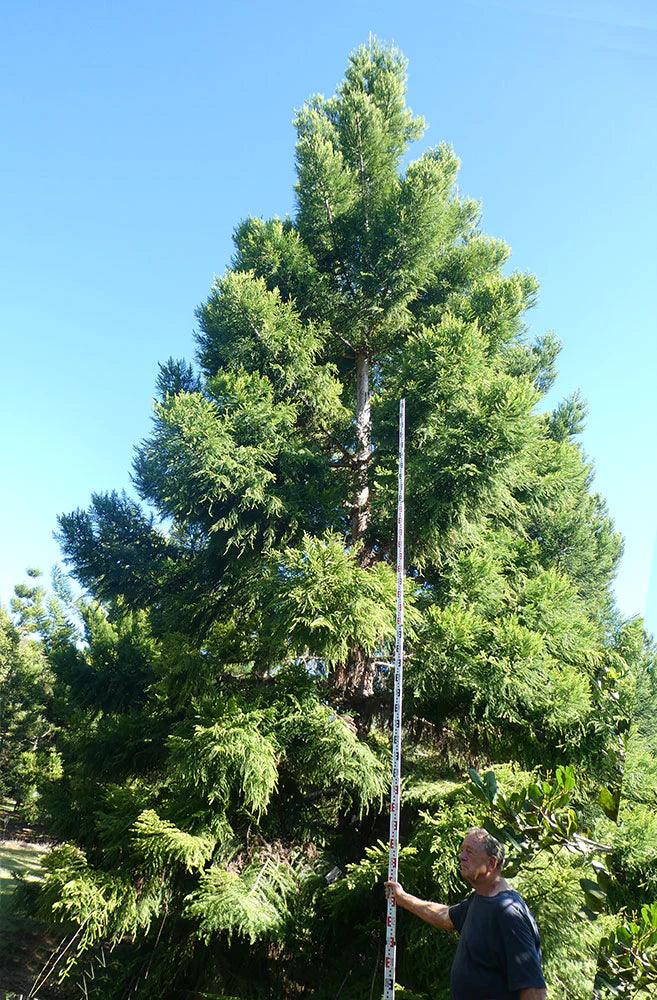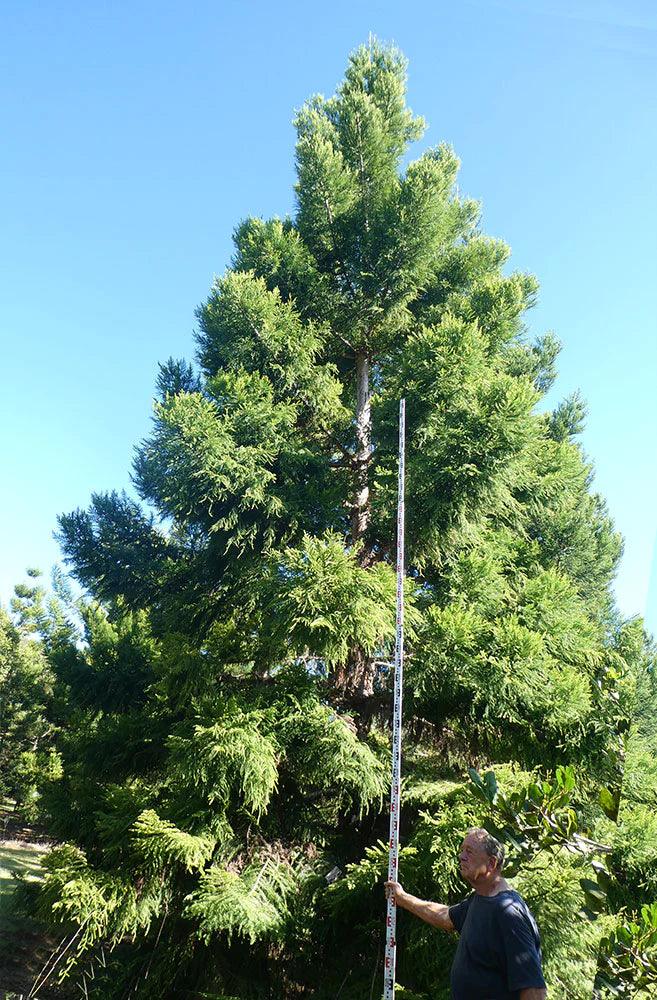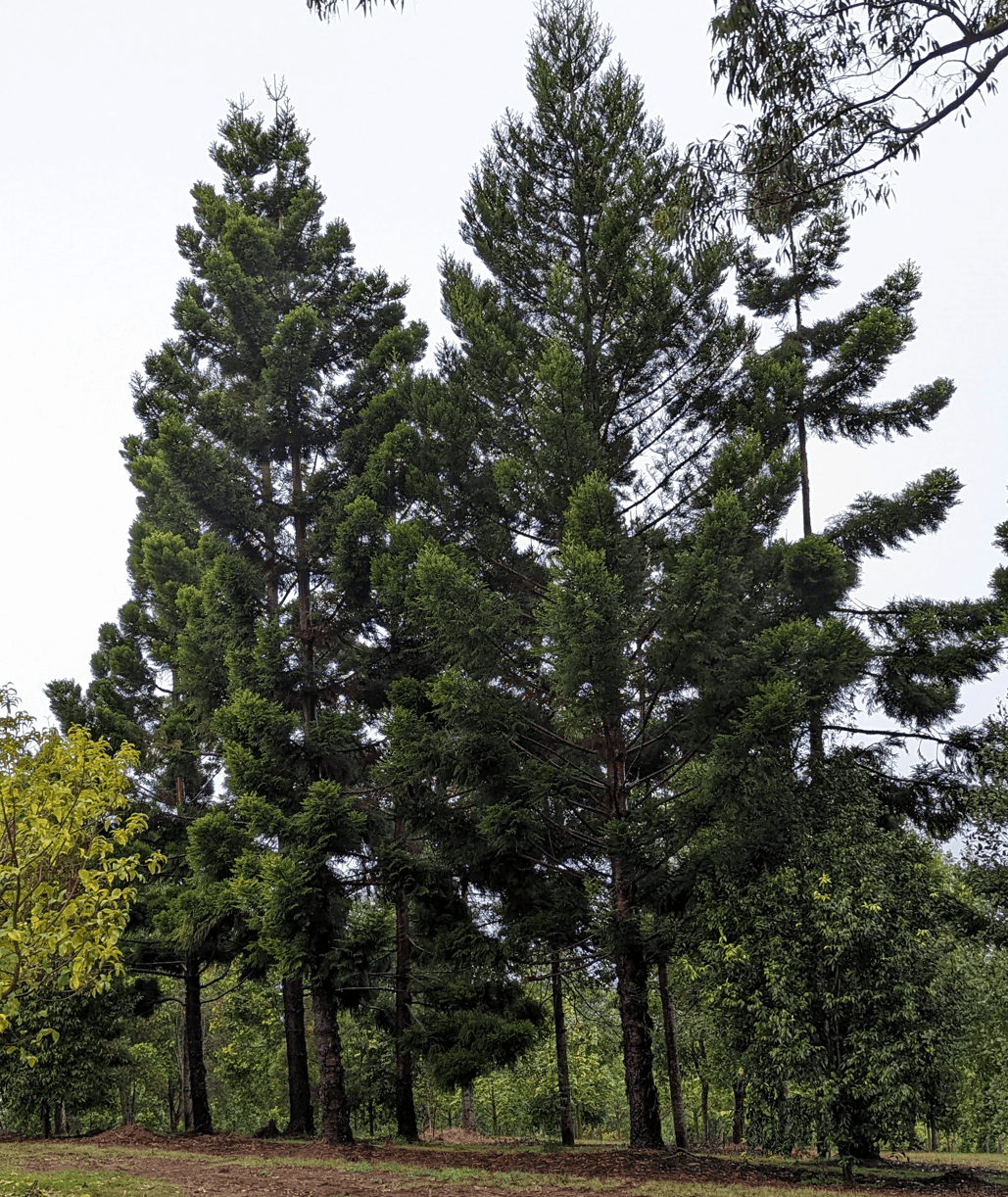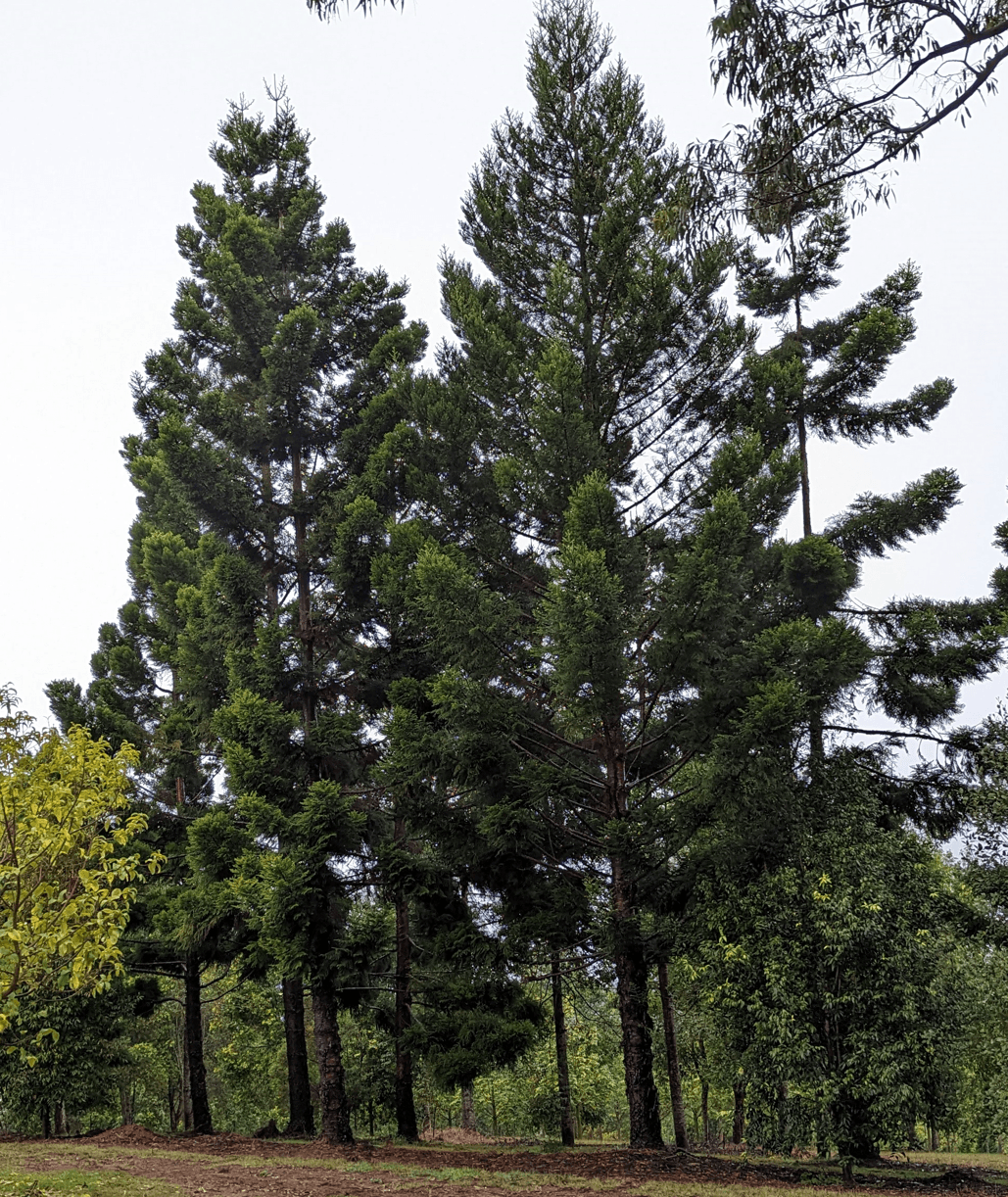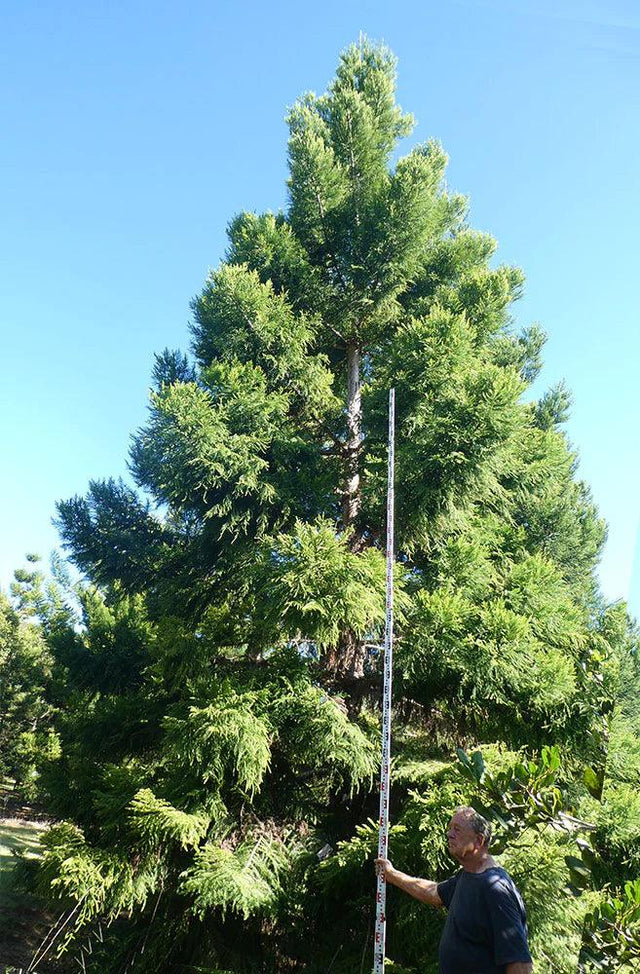Araucaria cunninghamii Hoop Pine
A large native coniferous tree with a distinctive, horizontal branching and soft but prickly foliage, It is an excellent host for native flora and fauna.
- Plant Height: 30-60 meters (100-200 feet) at maturity
- Plant Width: 8-15 meters (26-50 feet) spread
- Native To: Eastern Australia and Papua New Guinea
- Plant Foliage Type: Evergreen, dark green, needle-like leaves arranged in spirals
- Plant Growth Rate: Slow to moderate
- Plant Flowers: Non-flowering; produces small, inconspicuous cones (both male and female)
- Plant Light Needs: Full sun
- Plant Water Needs: Moderate; prefers well-drained soil and benefits from regular watering during establishment and dry periods
The Benefits Of Buying An Advanced Tree
The Process Of Transplanting A Mature Tree
Identify the Tree's Root Zone
Identify the Tree's Root Zone
Before you begin, it's essential to identify the root zone or root ball of the tree. This is the area where the majority of the tree's feeder roots are located. It is typically estimated as 1 foot of root ball diameter for each inch of tree trunk diameter.
Prune the Roots
Prune the Roots
Root pruning should occur a few months before the actual move, ideally in the dormant season. This involves cutting a trench around the root zone to encourage the growth of new feeder roots, which will help the tree to establish itself in its new location.
Prepare the Tree
Prepare the Tree
Prior to digging, prune dead or excessive branches from the tree. This reduces the tree's overall mass, making it easier to handle, and decreases water loss post-transplant.
Dig Around the Root Ball
Dig Around the Root Ball
After determining the root ball's size, begin digging around it. Try to retain as much soil around the roots as possible. The depth should ideally get under the root system but be feasible for lifting.
Undercut the Root Ball
Undercut the Root Ball
Once you've dug around the periphery of the root ball, begin undercutting to sever the remaining roots beneath it.
Lift the Tree
Lift the Tree
With the root ball freed, carefully lift the tree out of the hole. For large trees, this will likely require machinery like a tree spade or crane. Always lift the tree by the root ball, not the trunk.
Prepare the Tree for Transport
Prepare the Tree for Transport
Once the tree is out of the ground, it's critical to protect the root ball to prevent damage. Wrap it in burlap and secure it with twine, wire or steel basket. This not only holds the root ball together but also helps retain moisture.
Water the Root Ball
Water the Root Ball
Prior to transportation, water the root ball thoroughly to ensure the roots stay moist.
Transporting the Tree
Transporting the Tree
Load the tree carefully onto a truck or trailer for transport. The tree should be securely positioned to avoid damage during transit. The tree should ideally be planted in its new location as soon as possible to minimize stress and increase its chance of survival.

